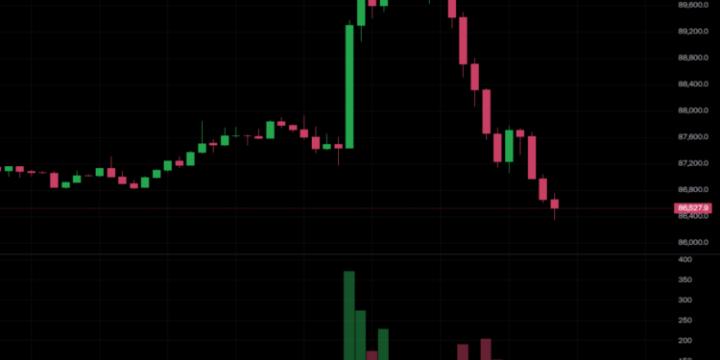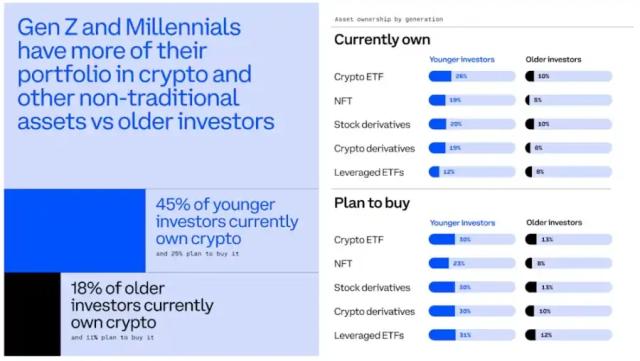The following text is summarized from the Twitter Space series #Dialogue with Traders, hosted by FC, founding partner of SevenX Ventures, Twitter @FC_0X 0
Guest: Raxy, independent trader, Twitter @Raxy 2001
About Raxy: From Primary Investor to Independent Trader
In January 2021, when the platform coins on various exchanges were being heavily traded, Raxy entered the Crypto industry. After working on GameFi projects, he joined the VC industry, working at Jsquare and DFG.
After more than two years in the VC industry, Raxy has reviewed hundreds of projects. At the beginning of this year, he left the VC industry, systematically learned trading, and became an independent Trader.
The progress in trading started with losing money...
At the beginning of the year, after the big rise in BTC, Altcoins also had some market performance. Raxy still used the "valuation nesting" logic of 2021 to trade Altcoins: for example, he would find targets in the secondary market with full circulation, similar background/track, and roughly the same and reasonable valuation, based on what the primary market thought would be hot and the estimated valuation.
Using this method, Raxy made some money, but from March, the market had strange changes.
By comparing the market share of BTC and USDT, Raxy found that the profitability of Altcoins was too difficult. Either there was news, or one had to have a very deep understanding of the thing, able to read the daily and weekly lines, and buy at the left bottom. Later, he re-examined his trading strategy and finally concluded:
In the crypto market, Bitcoin is the most suitable variety for full arbitrage. Therefore, he gradually shifted his trading focus to Bitcoin.
Currently, Raxy's capital scale is about $2 million. His position allocation is clear:
1) 80%-90% of the funds are invested in the spot market, using the Turtle trading method combined with key moving average indicators to capture market trends.
2) The remaining 10%-20% is used for contract trading, mainly relying on traditional chart pattern analysis and some small technical indicators to assist decision-making.
Through observing the practical experience of others and combining his own market exploration, Raxy has gradually formed a trading style that suits his personality and goals, and can flexibly respond to market changes.
How to Trade with High Win Rate Using Moving Averages?
Raxy believes that the market can be divided into two structures: oscillation and trend, which are constantly switching back and forth. The difference is that each person's understanding of the level of oscillation and trend may be different, for example, a daily oscillation may just be a one-hour unilateral market.
Raxy uses an EMA-based moving average system, with EMA reflecting the average price of the past.
Raxy pays special attention to the two moving averages of EMA 20 and EMA 200, and also uses common technical indicators such as MACD, RSI, and SRSI to confirm the trend. His specific operation rules are very clear:
1) When EMA 20 crosses above EMA 200, it is considered a buy signal, and a buy operation is executed;
2) When EMA 20 crosses below EMA 200, it is a sell signal, and a sell operation is executed.
In this way, you are sure to be in the market during a big rally, and definitely not in the market during a big drop.
However, moving average trading is not perfect. It actually lags behind the market response, and in a volatile market, the frequent price fluctuations will cause the moving averages to cross back and forth, resulting in significant wear and tear, meaning that multiple false signals may be generated during the volatile period, causing unnecessary trading losses.
But Raxy emphasizes that the biggest advantage of this trading strategy is its simplicity and clarity of operation, without the need for complex analysis or subjective judgment, which can avoid interference from market noise and emotional fluctuations. Therefore, it is suitable for people whose mentality is easily affected and who have poor emotional control ability. As long as they strictly execute, they can reduce the impact of subjective judgment and avoid making wrong decisions due to emotional fluctuations.
Can Moving Averages Guide Altcoin Trading?
Raxy believes that Altcoin trading can refer to the moving average strategy, but the effect will be relatively worse.
The characteristics of Altcoins are high Sharpe ratio and violent fluctuations, often accompanied by big rallies and big drops. In operation, Raxy regards the daily EMA 20 as an important reference indicator:
1) If the Altcoin fails to stand above the daily EMA 20, he usually will not make large-scale operations;
2) Only when the daily EMA 20 rises or is broken through, he believes that the market may have real buying power, accumulation or price increase momentum, and then he can trade according to the moving average rules, i.e. buy when it stands above, and sell when it falls below.
Raxy also mentioned that Altcoin trading requires higher requirements for take-profit and position management:
Take-profit needs accurate judgment, and staggered buying must be strictly controlled, with detailed mathematical calculations, otherwise the overall profit-loss ratio is easy to become unbalanced.
Although at the daily level, moving average trading can effectively reduce oscillation wear and tear, at smaller time frames, such as 1 hour or 4 hours, the situation becomes much more complicated.
Therefore, Raxy is more inclined to use the daily level to guide operations.
What is the Turtle Trading Method?
The Turtle Trading method is a trend trading strategy that is relatively effective in market environments with clear trends and less noise. This method relies on clear buy and sell signals, confirming the direction of the market trend by breaking through key levels (such as recent highs or lows).
In actual operation, Raxy uses the Turtle Trading method combined with moving averages, with the moving averages being the main focus. The Turtle Trading method can basically ensure that the trend is always there, and the small-time-frame moving averages can ensure knowing when the short-term trend ends, such as switching the time frame to 1 hour or 4 hours, which can probably know the exit point, including in combination with some MACD and other indicators.
"I've seen too many indicators, and I've actually lost money on almost all the methods and strategies in the market. So in the end, I chose the indicators that everyone's ears are calloused from, like MACD and trading volume, which are very simple."
Raxy also mentioned that the logic of choosing the Turtle Trading method and choosing moving averages is the same, which is to judge the rise and fall of prices. There are too many things to think about, one is not easy to figure out, and the other is very easy to think wrong, so it's better to choose a simple and clear system to avoid letting yourself have a mess of thoughts.
What Indicators Are Used to "Escape the Top"?
SRSI is an indicator that Raxy attaches great importance to. SRSI is a superimposed algorithm based on dynamic strength RSI.
1) When SRSI forms a death cross, Raxy will adopt a defensive strategy of reducing positions.
2) When SRSI forms a golden cross, he will consider rebuilding positions.
Although SRSI can effectively reflect the market's buying power and the trend in the next period, it is still difficult to accurately judge the top in a rapidly changing trend market.
Raxy will also look for clues from the logic of large traders' behavior. For example, when large traders no longer use the spot market for large-scale buying, but start to adopt other ways to obtain returns, it may mean that the willingness to further push up the price is weakening, and at this time the market's upward momentum may be approaching the end.
But overall, judging the market top is always an extremely challenging task, and there is no single method that can accurately predict it.
The "Stop Doing List" Summarized from Two Major Losses
Raxy mentioned that the core of the Stop Doing List is to avoid trading errors caused by mental problems.
First, do not set unrealistic integer target levels for profits.
"When you make a lot of money in a short period of time, exceeding your expectations, you are very likely to set a target for a certain integer level. And once this target is established, that day is almost the beginning of your losing money - there will be no exceptions."
In addition, one should always respect the signals of the trading system and allocate positions reasonably. Avoid potential losses caused by blind self-confidence.
Also, never run two strategies on the same account, as that will just mess things up.
Six Mindsets Necessary for Successful Trading
In a conversation with Raxy, he also shared some of the mindsets he has developed during his transformation into a trader, which he encourages others to adopt:
1. Trading is like playing the hell difficulty level in a life game, and conquering this level will give you a deeper understanding of various other things.
2. Investing in the primary market is actually investing in people, in their integrity, while the secondary market ultimately comes down to position management.
3. There is no perfect trading strategy; you need to learn to distinguish between trend cycles and oscillation cycles, and hedge accordingly in different market stages.
4. The trading epiphany is to start subtracting: no longer fantasizing about getting rich quickly, because you know that profits beyond your understanding will eventually be given back to the market; and no longer worrying about the serious consequences of continuous losses, because losses are already within your plan.
5. Go with the trend, and the certainty will be higher.
6. Opportunities are always there, the important thing is whether you are still there.
In Conclusion
After talking to so many traders, I've found that they are all ultimately searching for themselves.
What is my relationship with this market? Where should I be placed, and how should I do things to feel comfortable and make money? Finding a trading strategy that matches your personality and continuously adjusting the relationship between your personality and trading strategy is the underlying and particularly important thing for traders.






